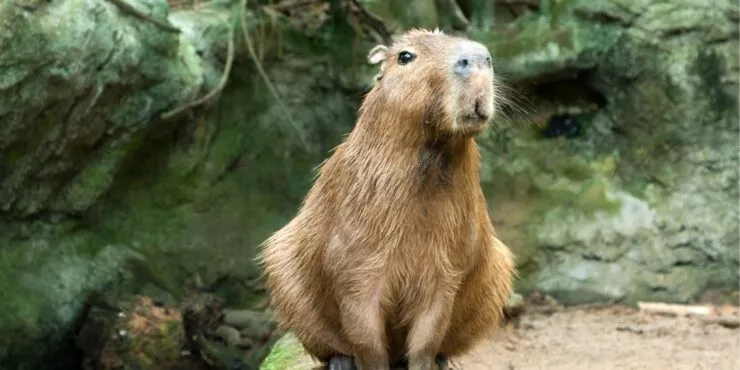Carefree Facts About Capybaras
Imagine a creature that embodies the essence of tranquility and charm, a true ambassador of the carefree life.
Enter the world of capybaras, where these remarkable rodents roam the lush landscapes of South America, spreading joy wherever they go.
So, if you’re ready to embark on a journey of discovery, join us as we unveil 20 fascinating tidbits about these extraordinary creatures that will make you fall head over heels for capybaras!
They might not look like it, but they’re rodents. They’re not just any rodents, though – but the largest living ones!
There are two species of capybaras, the greater capybara, or Hydrochoerus hydrochaeris, and the lesser capybara, or Hydrochoerus isthmius.
It’s easy to tell the difference between greater and lesser capybaras, though. While they both look similar, lesser capybaras are much smaller, have entirely different breeding habits, and are nowhere near as social as their larger counterparts.
Capybaras belong to the Cavy family of rodents, a group of South American rodents that also includes the domestic guinea pig.
Believe it or not, there’s no collective noun for a group of capybaras! Some people have suggested a meditation of capybaras because they’re so chilled out.
They’re highly social creatures. While they usually live in groups of ten to twenty, this number has been known to rise as high as 100 or so.
Their name comes from the indigenous Tupi people of Brazil, who called it ka’apiûara, meaning “one who eats slender leaves.”
After requests from Venezuelan priests, in 1784, the Vatican declared that, due to their aquatic nature, capybaras could be classified as fish and could thus be eaten during Lent.

No comments:
Post a Comment